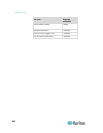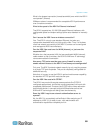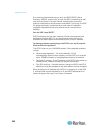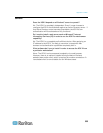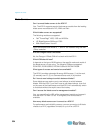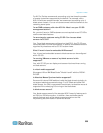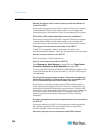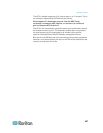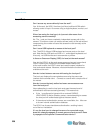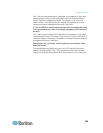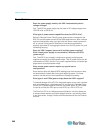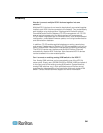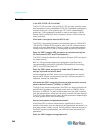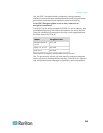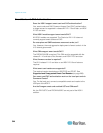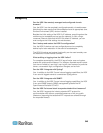
Appendix D: FAQs
338
Local Port
Can I access my servers directly from the rack?
Yes. At the rack, the KSX II functions just like a traditional KVM switch -
allowing control of up to 16 servers using a single keyboard, monitor, and
mouse.
When I am using the local port, do I prevent other users from
accessing servers remotely?
No. The local port has a completely independent access path to the
servers. This means a user can access servers locally at the rack without
compromising the number of users that access the rack remotely at the
same time.
Can I use a USB keyboard or mouse at the local port?
Yes. The KSX II offers a USB keyboard and mouse ports on the local
port. Note that the USB ports are USB v1.1, and support keyboards and
mice only, not USB devices such as scanners or printers.
Is there an Onscreen Display (OSD) for local, at-the-rack access?
Yes, but the KSX II's at-the-rack access goes way beyond conventional
OSDs. Featuring the industry's first browser-based interface for
at-the-rack access, the KSX II's local port uses the same interface for
local and remote access. Moreover, most administrative functions are
available at-the-rack.
How do I select between servers while using the local port?
The local port displays the connected servers using the same user
interface as the remote client. Connect to a server with a simple click of
the mouse.
How do I ensure that only authorized users can access servers
from the local port?
Users attempting to use the local port must pass the same level of
authentication as those accessing remotely. This means that:
If the is configured to interact with an external RADIUS,
LDAP/LDAPS or Active Directory server, users attempting to access
the local port will authenticate against the same server.
If the external authentication servers are unavailable, the fails-over
to its own internal authentication database.
The KSX II has its own standalone authentication, enabling instant,
out-of-the-box installation.
If I use the local port to change the name of a connected server,
does this change propagate to remote access clients as well? Does
it propagate to the optional CommandCenter device?



